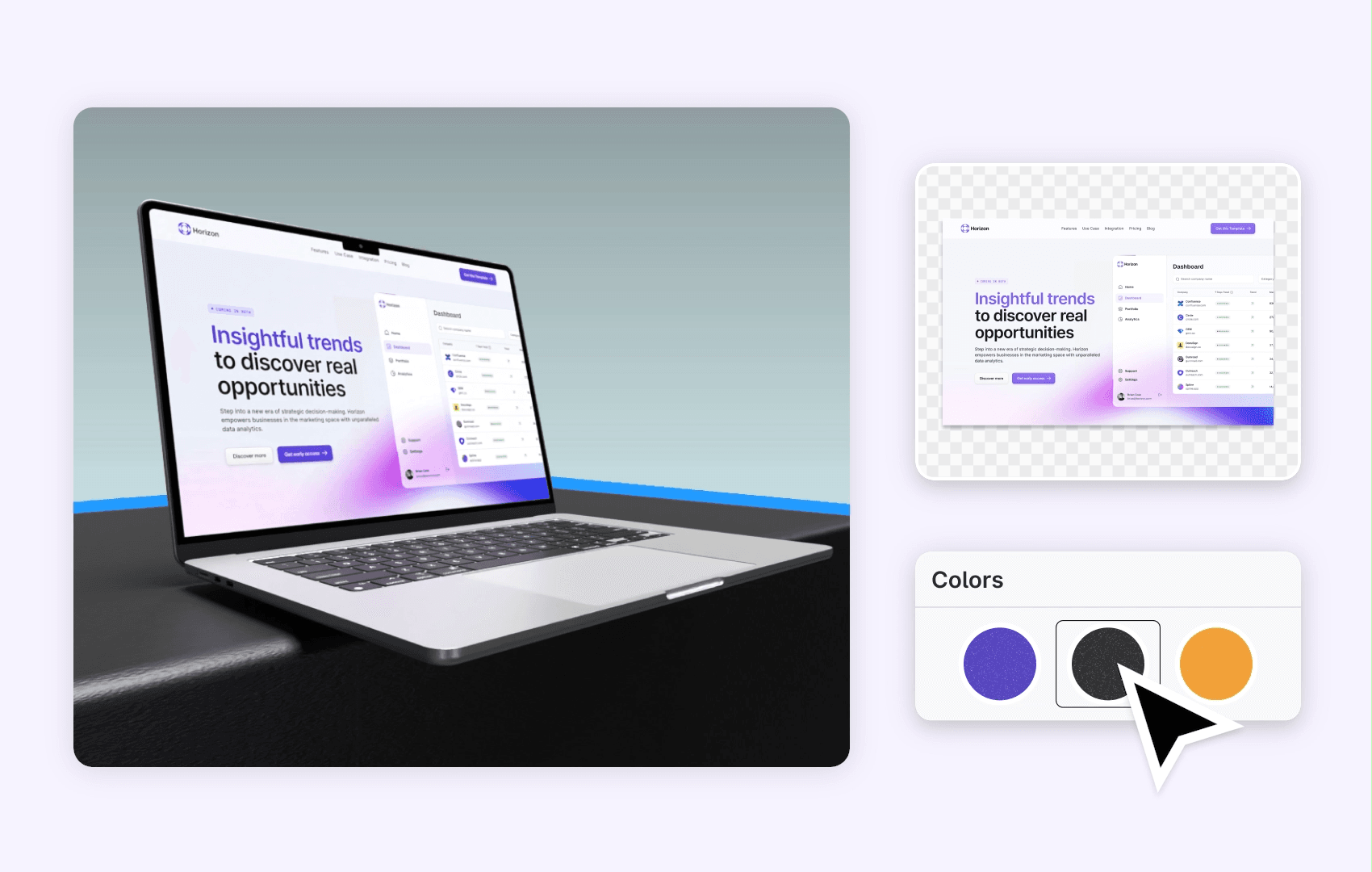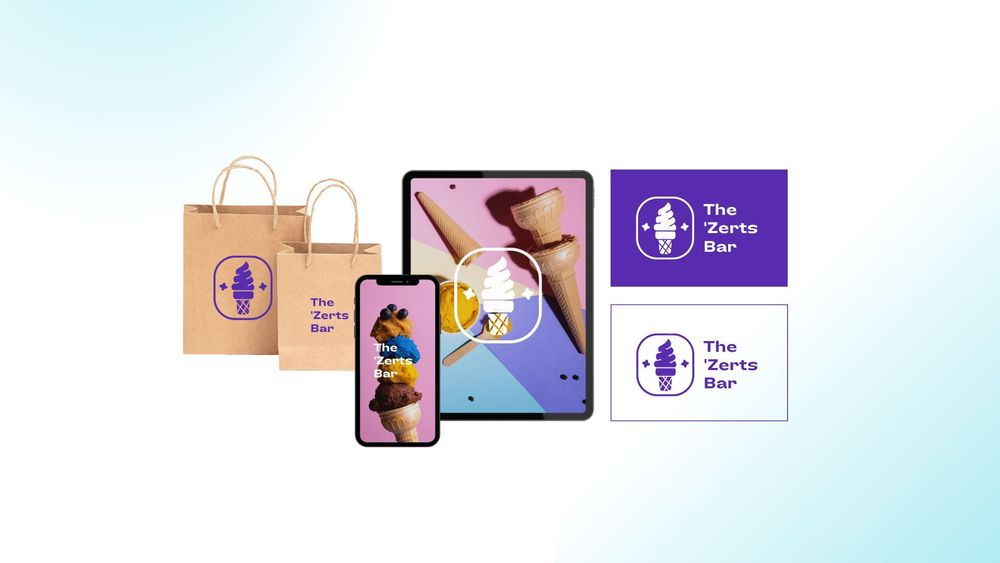Thinking about a career change or exploring your creative side? Design might be the perfect path for you. But with so many options, it can be tough to know where to start. Two popular roles are brand designer and graphic designer. While they might seem similar at first glance, they have distinct focuses and responsibilities.
In this article, we'll explore the key differences between brand designers and graphic designers, so you can better understand which path might be right for you. This guide is also helpful for business owners and hiring managers who are looking to hire for these roles.
What Is a Brand Designer?
A brand designer, also known as a brand strategist or brand identity designer, is responsible for creating and maintaining a company's overall visual image. This includes everything from the logo and color scheme to typography, packaging design, and marketing materials.
Brand designers are ultimately responsible for ensuring that a company's visual elements accurately represent its values, mission, and goals. They work closely with marketing teams and business owners to understand the target audience and create designs that effectively communicate the brand's message.
Add Pixcap online mockup generator to your design toolkit to create stunning mockups. Explore thousands of customizable mockups and animated mockups for your brand now!

Brand Designer Vs. Graphic Designer
Brand design is generally considered a subset of graphic design. While graphic design focuses on creating visual content across various mediums—like print, digital, and advertising—brand design specifically concentrates on developing the visual identity of a brand.
A brand designer is focused on creating and managing the overall visual identity of a company, while a graphic designer is more involved in creating individual design elements.
Graphic designers are responsible for designing specific materials such as posters, brochures, social media graphics, and website layouts. They often work with existing branding guidelines or collaborate with brand designers to ensure consistency across all materials.
While both roles require strong design skills and an eye for aesthetics, brand designers also need to have a deep understanding of marketing and branding principles. They must be able to bridge the gap between design and strategy to create visually appealing designs that effectively communicate the brand's message.
What Does a Brand Designer Do?
Brand designer is an exciting role that offers a lot of variety. Some common tasks and responsibilities for brand designers include:
- Brand strategy development: Creating a strategic plan that outlines the brand's mission, vision, values, and target audience.
- Logo design: Designing a unique and memorable logo that represents the brand's identity.
- Color palette selection: Choosing colors that evoke the desired emotions and align with the brand's personality.
- Typography selection: Selecting fonts that are appropriate for the brand's tone and style.
- Brand guidelines creation: Developing a set of guidelines that outline how the brand should be used consistently across all marketing materials.
- Packaging design: Designing packaging that is visually appealing and reflects the brand's identity.
- Website design: Creating visually appealing and user-friendly websites that align with the brand's aesthetic.
- Social media design: Designing graphics and content for social media platforms that are consistent with the brand's visual identity.
- Print design: Designing print materials such as brochures, business cards, and advertisements.
In essence, a brand designer is a storyteller who uses visual elements to communicate a brand's message and connect with its target audience.
What Skills Do You Need To Be a Brand Designer?
A successful brand designer needs a strong foundation in graphic design skills, combined with a strategic understanding of branding principles. Here are some essential skills:
Graphic Design Skills
- Visual communication: The ability to effectively convey messages through visual elements like color, typography, and imagery.
- Typography: A deep understanding of fonts, typefaces, and their impact on the overall design.
- Color theory: Knowledge of color psychology and how to use color to evoke emotions and create visual hierarchy.
- Illustration: The ability to create original illustrations or work with illustrators to enhance designs.
- Layout and composition: Skill in arranging elements on a page to create visually appealing and balanced designs.
- Digital tools: Proficiency in design software such as Adobe Creative Suite (Photoshop, Illustrator, InDesign).
Branding Skills
- Brand strategy: The ability to develop a comprehensive brand strategy that aligns with the client's goals and target audience.
- Brand identity: Understanding the importance of creating a consistent and memorable brand identity across all touchpoints.
- Brand messaging: The ability to craft clear and compelling brand messages that resonate with the target audience.
- Market research: The skill to conduct research to understand consumer behavior, trends, and competitors.
- Client communication: Effective communication skills to collaborate with clients, understand their needs, and present design concepts.
- Problem-solving: The ability to think creatively and find innovative solutions to design challenges.
By combining these graphic design and branding skills, a brand designer can create powerful and effective visual identities that help businesses stand out and achieve their objectives.
Career Development for Brand Designers
Career Path and Salary
Brand designers can pursue various career paths, depending on their skills and interests. They can work as in-house designers for a specific brand or company, or they can choose to work at an agency and handle multiple clients. Some may also choose to freelance and have more flexibility in choosing projects.
The salary of a brand designer varies based on factors such as experience, location, and industry. According to Glassdoor, the average annual salary for a brand designer in the United States is around $60,000. However, with experience and proven success in creating strong visual identities for brands, designers can earn upwards of $100,000 per year.
Building a Portfolio and Qualifications
Having a portfolio is crucial for brand designers because it allows them to display their work to potential clients or employers. It acts like a visual resume, showing off their creativity and style.
While not always necessary, having qualifications in graphic design or a similar field can be helpful. It provides a solid foundation of skills and knowledge that can enhance a designer's work.
Experience with branding projects is important too. It shows that the designer understands how to create a strong brand identity. Creative skills are essential in this field, as they help bring unique and engaging ideas to life.
The Value of Brand Design for Your Business
As a business owner, you may wonder whether investing in brand design is worth it. The answer is yes.
A strong brand identity can set your business apart from competitors and help build trust with your target audience. It gives your business a personality and makes it more relatable to customers.
Brand design also plays a crucial role in marketing and advertising efforts. A well-designed brand can make marketing materials more appealing and memorable, ultimately leading to higher conversion rates.
Moreover, having a consistent brand image across all platforms and touchpoints creates a sense of professionalism and credibility for the business. It helps customers recognize and remember your brand, leading to increased brand loyalty and repeat business.
How to Find the Right Brand Designer
Finding the right brand designer involves several key steps. Start by clearly defining your brand needs, including project scope and target audience. Next, review portfolios to identify designers whose style aligns with your vision; a diverse portfolio indicates versatility. Checking references and testimonials is essential for gauging reliability and communication skills.
Assess the designer’s skills and experience relevant to your project, ensuring they understand branding principles and possess necessary software proficiency. Conduct interviews to discuss your project in detail and evaluate how well they listen and articulate their ideas.
Effective communication is crucial, so be upfront about your budget and timeline, discussing pricing structures to prevent misunderstandings. Finally, consider starting with a small project to test the designer’s fit and working style. By following these steps, you can find a brand designer who effectively meets your needs and aligns with your brand’s vision.
Wrapping Up
If you enjoy creative work and marketing, brand design can be a fulfilling and rewarding career choice. As a brand designer, you have the opportunity to shape and influence how businesses are perceived by consumers. By understanding the importance of branding and honing your skills, you can help businesses establish a strong and memorable brand image.
Remember, effective branding is not just about creating a pretty logo or catchy tagline; it's about crafting a cohesive visual identity that conveys the essence of a business and resonates with its target audience. So if you're considering pursuing a career in brand design, don't forget to continuously educate yourself on industry trends and best practices.




